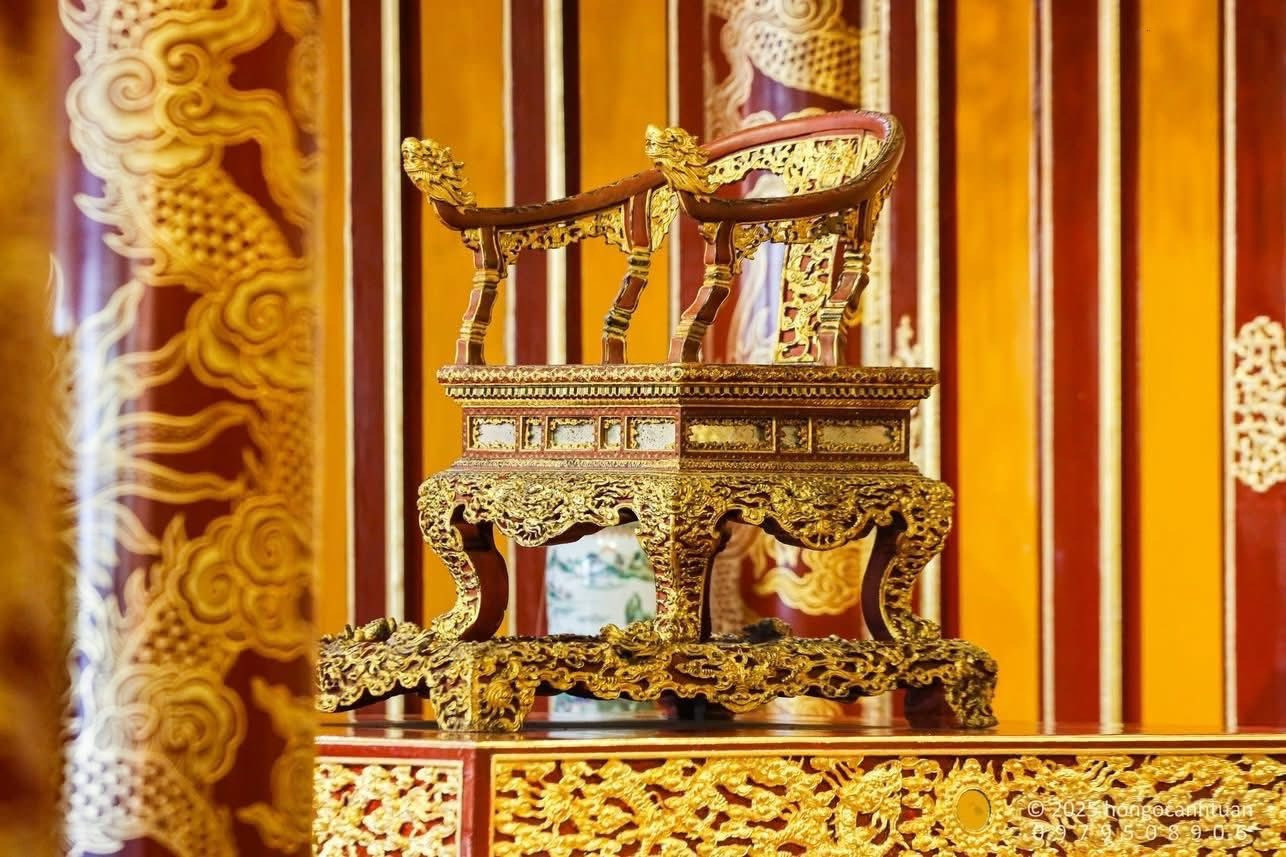The People's Committee of Hue City has submitted an official proposal to the Ministry of Culture, Sports and Tourism, requesting permission to establish a national council to assess the damage and develop a restoration plan for the Nguyen dynasty’s imperial throne, a recognized National Treasure.

Two options have been proposed: either the Ministry forms the council itself, or authorizes Hue City to establish it.
The council would be chaired by the Director or Deputy Director of the Department of Cultural Heritage and would include representatives from state management agencies, heritage and cultural experts, and specialists in the restoration of wooden antiquities.
Following its assessment, the council will issue a conclusion and send a report to Hue City, which will then seek the Ministry’s approval before submitting the official restoration plan to the Prime Minister.
Upon receiving final approval, the Hue Monuments Conservation Center will execute the restoration, under close supervision and inspection by relevant authorities to evaluate the condition of the relic post-restoration.
The council is also expected to propose long-term solutions for preserving and protecting the Nguyen dynasty’s throne, which is housed in the Thai Hoa Palace.
Earlier, on May 24, a man named Ho Van Phuong Tam (born 1983, a native of Hue and current resident of Binh Tan District, Ho Chi Minh City) appeared to be suffering from a mental episode.
After purchasing a ticket, he entered the Imperial City and approached Thai Hoa Palace, where the throne is located.
Tam bypassed the protective barrier, climbed onto the throne, and behaved erratically. He used his hands to break the left armrest into several pieces.
The Nguyen dynasty throne, dating from 1802 to 1945, was officially recognized as a National Treasure in 2015.
It was crafted during the reign of Emperor Gia Long (1802–1819) and used throughout the dynasty’s 143-year history, spanning 13 emperors, ending with Emperor Bao Dai’s abdication in 1945.
According to historical records, the throne is made of wood, weighs about 60 kilograms, and consists of two parts: the throne itself and its base.
It features a ceremonial canopy overhead. The throne measures 87cm in length, 72cm in width, and 101cm in height. The base measures 118cm in length, 90cm in width, and 20cm in height.
Tinh Le